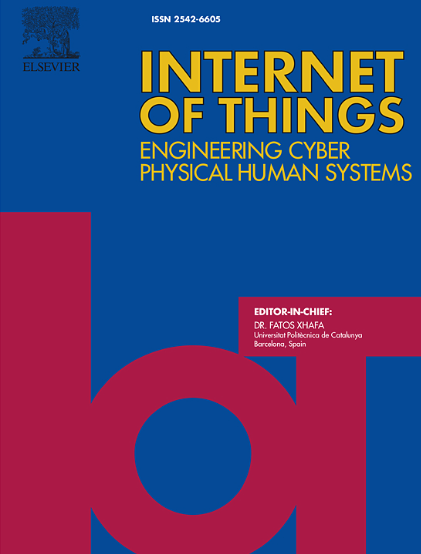Noise-resilient feature selection for accelerometer-based guyed tower monitoring
IF 6
3区 计算机科学
Q1 COMPUTER SCIENCE, INFORMATION SYSTEMS
引用次数: 0
Abstract
Guyed towers are vulnerable to environmental hazards that can lead to the collapse of transmission lines, jeopardizing essential services. Relaxed cables represent a critical condition that can result in structural failure. A Structure Health Monitor (SHM) is an Internet of Things (IoT) application that relies on an accelerometer to measure cable-stayed vibrations. This data is then inputted into a machine learning algorithm to identify relaxed cables. We incorporated a feature engineering step to enhance machine learning inference and mitigate uncertainty from raw accelerometer channels. However, there are concerns regarding high dimensionality and complexity arising from more irrelevant and correlated features. Additionally, sensors from IoT applications can introduce various types and magnitudes of noise. eXplainable Artificial Intelligence (XAI) approaches enable feature importance ranking and select more relevant and influential features. We experimented with traditional feature selection and XAI approaches to feature importance rankings. Our results show the robustness of features selected by XAI approaches compared to traditional accuracy. The baseline, which includes all features, achieved an accuracy of 96%, while the performance of machine learning algorithms under noise varied between 87% and 98%, closer to the baseline.
基于加速度计的雷达塔监测噪声弹性特征选择
盖伊塔容易受到环境危害,可能导致输电线路崩溃,危及基本服务。松弛的钢索是一种可能导致结构破坏的临界状态。结构健康监视器(SHM)是一种物联网(IoT)应用程序,它依赖于加速度计来测量斜拉索振动。然后将这些数据输入到机器学习算法中,以识别松弛的电缆。我们结合了特征工程步骤来增强机器学习推理并减轻原始加速度计通道的不确定性。然而,由于更多不相关和相关的特征引起了高维性和复杂性。此外,来自物联网应用的传感器可能会引入各种类型和大小的噪声。可解释的人工智能(XAI)方法实现特征重要性排序,并选择更相关和更有影响力的特征。我们尝试了传统的特征选择和XAI方法来进行特征重要性排序。我们的结果表明,与传统精度相比,XAI方法选择的特征具有鲁棒性。包括所有特征的基线达到了96%的准确率,而机器学习算法在噪声下的性能在87%到98%之间变化,更接近基线。
本文章由计算机程序翻译,如有差异,请以英文原文为准。
求助全文
约1分钟内获得全文
求助全文
来源期刊

Internet of Things
Multiple-
CiteScore
3.60
自引率
5.10%
发文量
115
审稿时长
37 days
期刊介绍:
Internet of Things; Engineering Cyber Physical Human Systems is a comprehensive journal encouraging cross collaboration between researchers, engineers and practitioners in the field of IoT & Cyber Physical Human Systems. The journal offers a unique platform to exchange scientific information on the entire breadth of technology, science, and societal applications of the IoT.
The journal will place a high priority on timely publication, and provide a home for high quality.
Furthermore, IOT is interested in publishing topical Special Issues on any aspect of IOT.
 求助内容:
求助内容: 应助结果提醒方式:
应助结果提醒方式:


